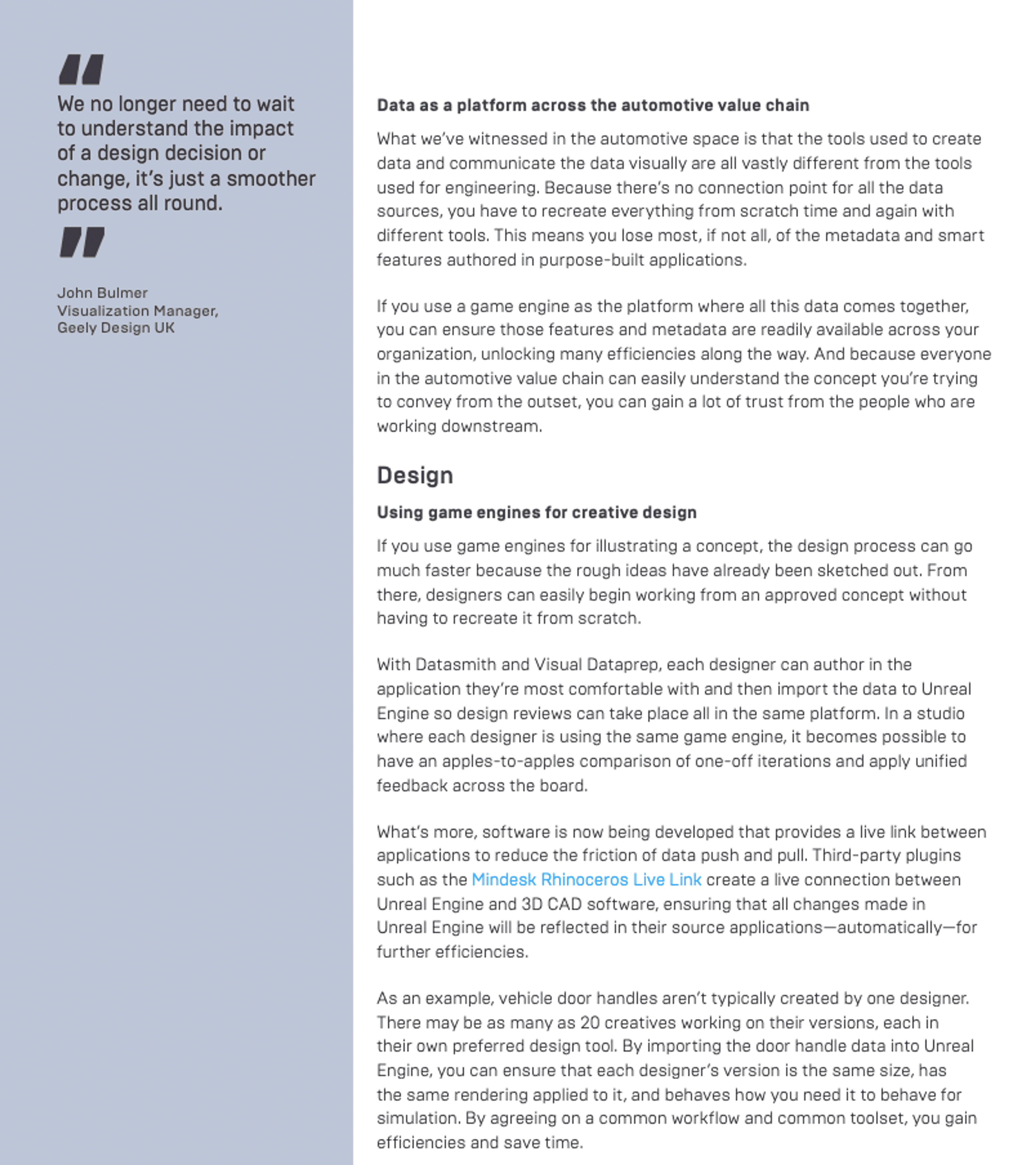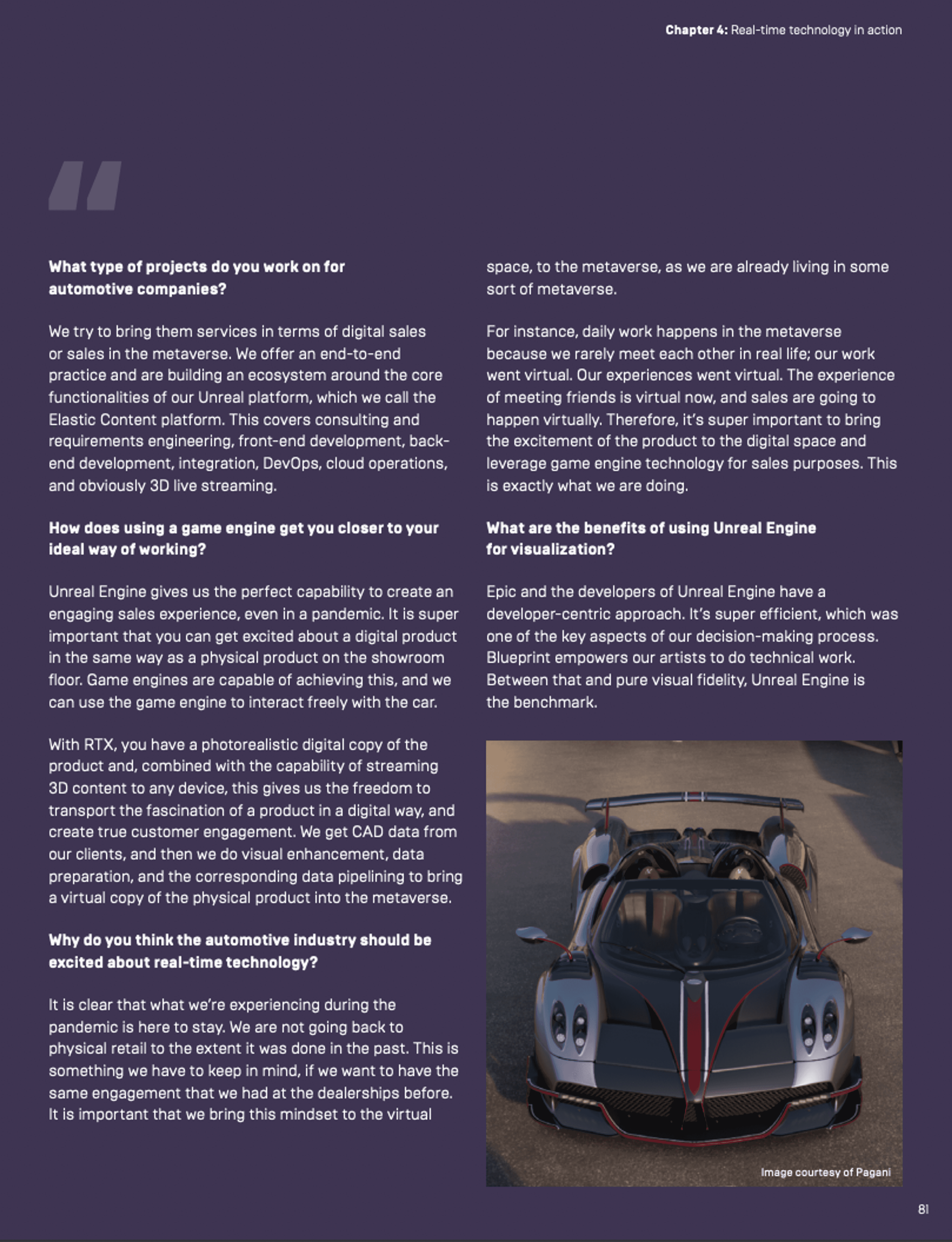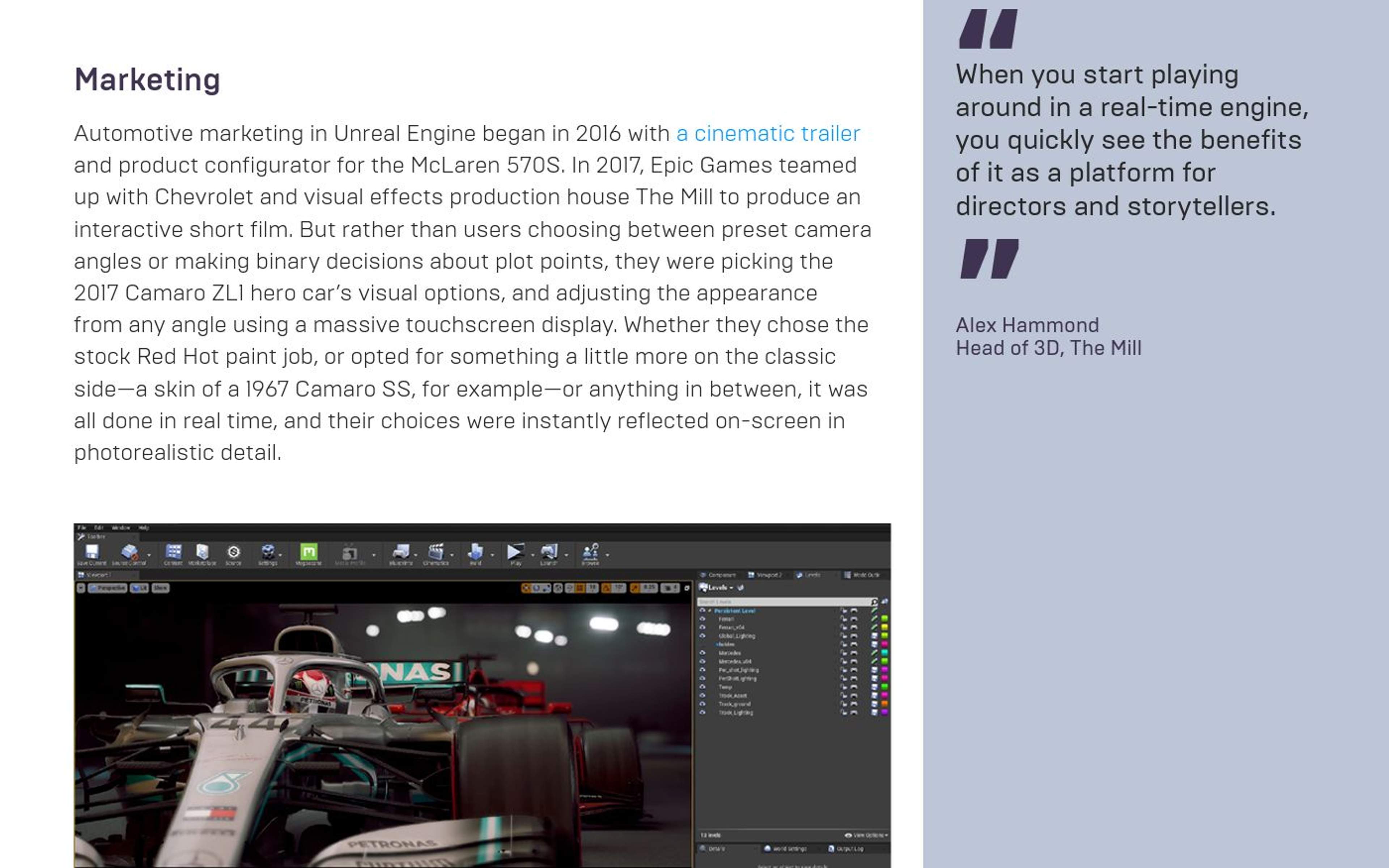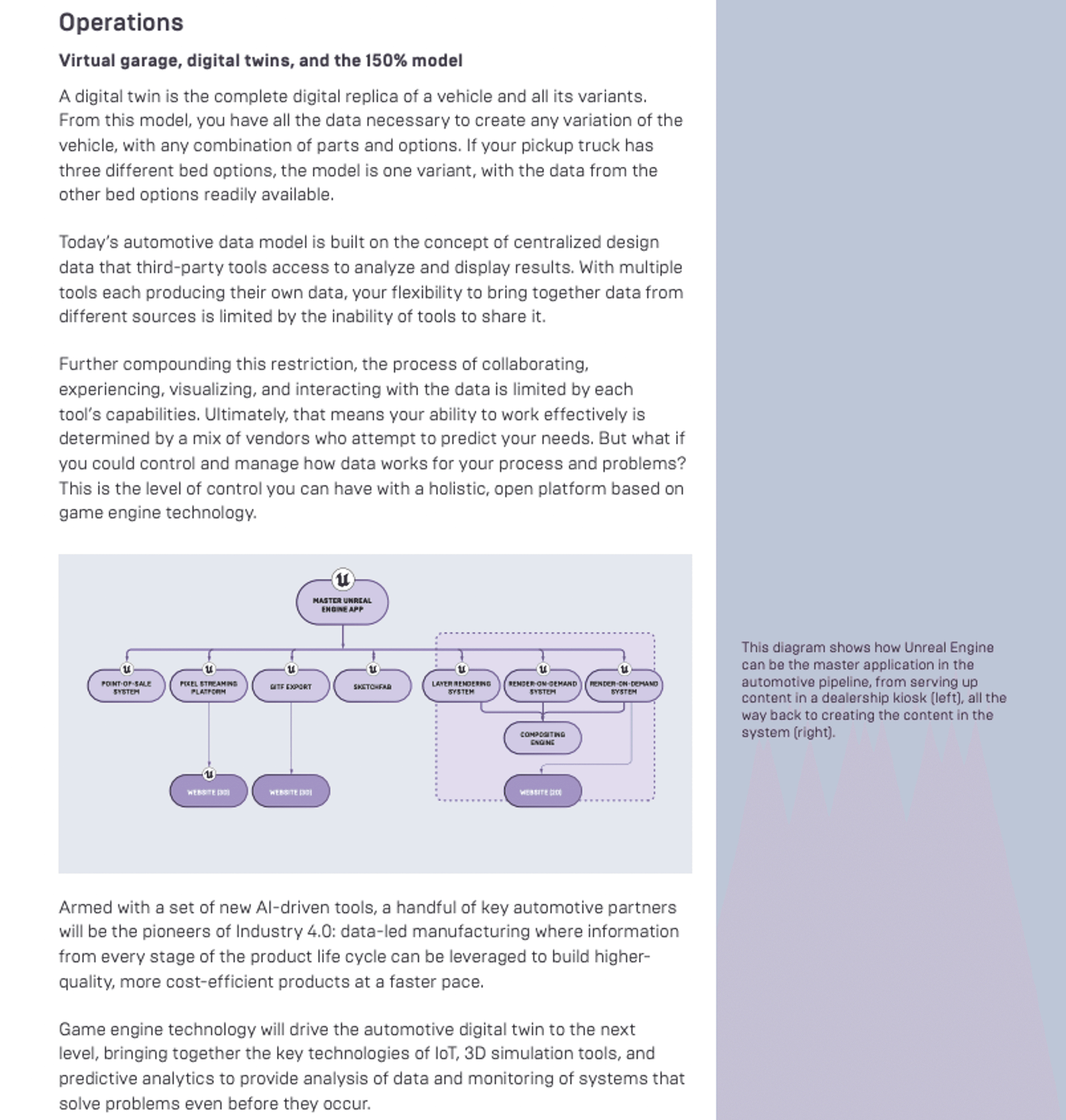How I convinced 78% of the auto industry to use Unreal Engine
Project Background
Everyone knows Epic Games for Fortnite, the online video game that generates billions annually and has your kids perpetually begging for V-Bucks.
But the company’s Unreal Engine is capable of so much more than making a cartoony island full of pop culture icons.
The hard part is getting the century-old auto industry to listen.
In 2019 Epic announced its ambitions to transform auto with the same real-time tech Disney used to disrupt filmmaking on The Mandalorian.
Convincing the industry to abandon decades of established process while also illustrating efficiencies and use cases for game-engine technology in auto applications?
That's where the real work starts.
Creative Process
The Automotive Field Guide came together across seven months via dozens of subject matter expert interviews with Epic executives and stakeholders around the globe.
It details how Unreal can be used as an open-source data platform that streamlines everything from simulation and real-time version control, to HMI design and large-scale marketing activations.
I supplemented the SME interviews with Epic's expansive troves of technical documentation, synthesizing it into jargon-minimal copy aimed at C-level technologists.
Overviews, feature descriptions, use cases, process flows, customer success case studies and glossary definitions – including "metaverse" – span some 120 pages.
I met with project manager Ross Hogben and director of HMI & automotive Heiko Wenczel on a weekly basis to go over progress, strategize interviews and maintain editorial consistency.
Final Results
Following publication in 2020, Epic commissioned Forrester Consulting to poll the industry on its interest in real-time technology:
78% of auto respondents agreed or strongly agreed that they'd like to use real-time technology for concepting, design and marketing.
The Automotive Field Guide is available in PDF and printed versions.






